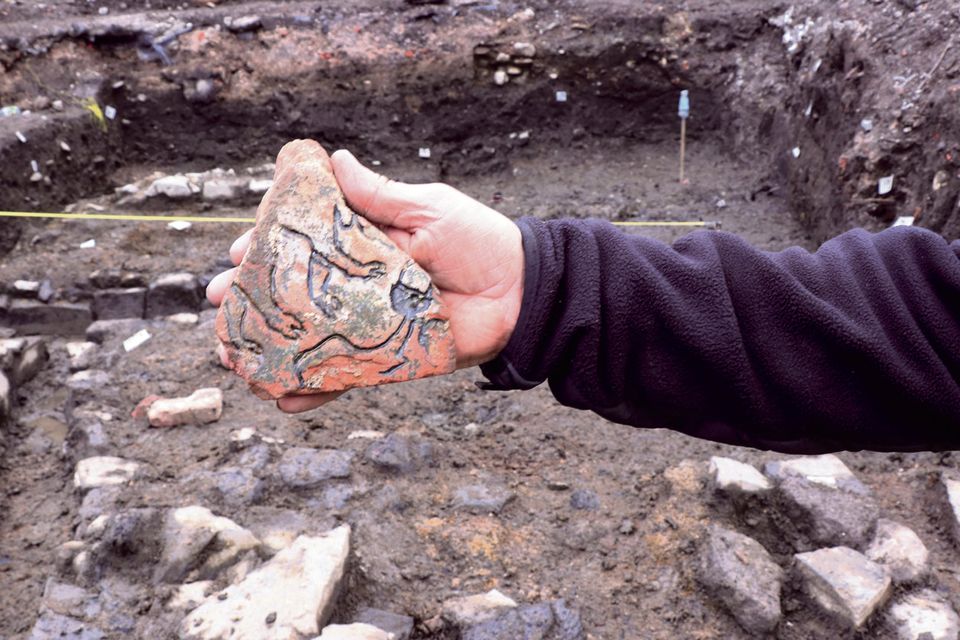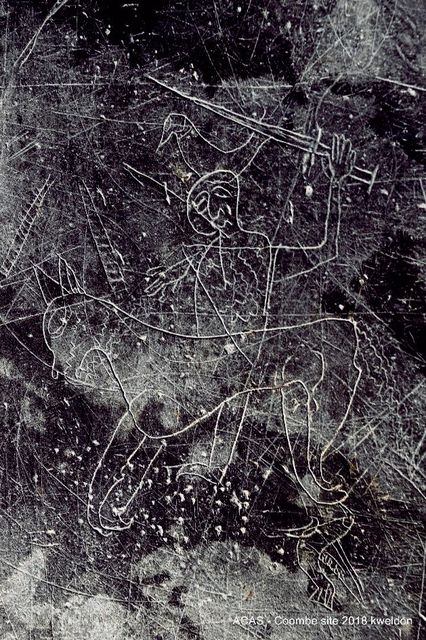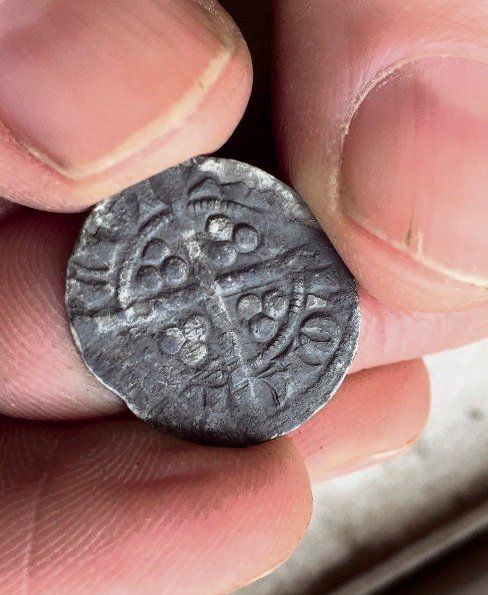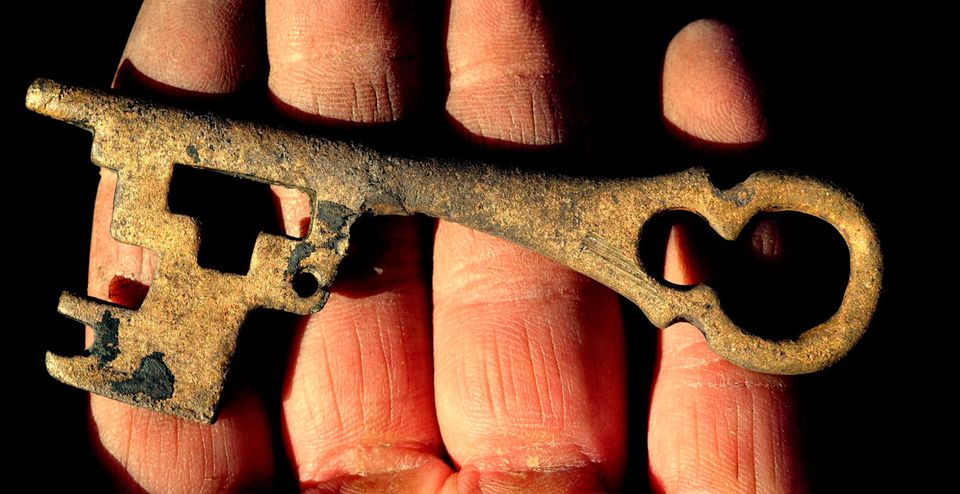'Graffiti' among treasure trove of Viking artifacts found on Dublin building site
Dean Street archaeological dig at the Coombe, Dublin 8 Pic: Kevin Weldon/Aisling Collins
ARCHAEOLOGISTS working on the site of a new hotel in Dublin have unearthed stunning artifacts from the city’s late Viking and medieval periods.
The finds at the site of the planned Hodson Bay Dublin Hotel, on Dean Street, in the Coombe, include the striking ‘graffiti’ image of a man riding a horse etched into a slate sometime around the 12th century.
The slate with the etching of a horseman Picture: Kevin Weldon/Aisling Collins
It was found in a wattle and post house dating from the same period, making the artifact hugely significant, according to experts.
Also found at the site was an extremely rare copper alloy Viking key.
Aisling Collins, an archaeologist working on the site, told the Irish Independent the dig resulted in a “once-in-a-lifetime find” of historical items.
She explained there were three phases, with artefacts from the 17th to 19th century at the highest level of the soil, 13th to 14th century at the middle levels, and 10th to 12th at the lowest.
A coin from the 13th or 14th Century found on the site Picture: Kevin Weldon/Aisling Collins
The earliest artifacts are contemporaneous with the late Viking – also known as Hiberno-Norse – period settlement at Wood Quay discovered in the 1970s during the construction of the Dublin City Council offices there.
“Wood Quay would have been the city centre, but this was the suburbs,” Ms Collins said.
Four distinct Hiberno-Norse property plots were excavated, including post and wattle boundary fences.
In total, the remains of nine structures from the period were discovered.
Circa 12th Century Viking style copper alloy key found at the Coombe site Picture: Kevin Weldon/Aisling Collins
“The preservation of the organic material was excellent with lots of 12th-century leather shoes, a wooden spoon, a wooden bowl, a copper alloy decorated stick pin, a 12th-century copper alloy key, and worked bone objects.
“There was also a lot of pottery sherds found, including an almost complete jug.”
The objects found at the site dating from the medieval period – after the Norman invasion of 1167 – included a merchant’s weighing scales from the 13th or 14th century, and a silver King Edward coin.
An ornate medieval well including stone steps was discovered in excellent condition.
A “very unusual” ceramic bird resembling a dove was also found.
There were signs of industrial activity from later centuries, including lots of ovens, a vaulted cellar, kilns and cobbled working areas. These date from between the 17th-19th centuries.
“It was very exciting,” Ms Collins said. “Absolutely fantastic. We knew there was archaeology there from previous partial excavation.”
She said the dig had now been completed and all the findings were subject to verification.
The artifacts will be preserved and sent to the National Museum.
Johnny O’Sullivan, director of the Hodson Bay Group, said the history unearthed in the dig would now form part of the hotel experience.
“We are recreating the well in the garden,” he said, adding they were looking for a way to use the image of the horseman.
Join the Irish Independent WhatsApp channel
Stay up to date with all the latest news


















